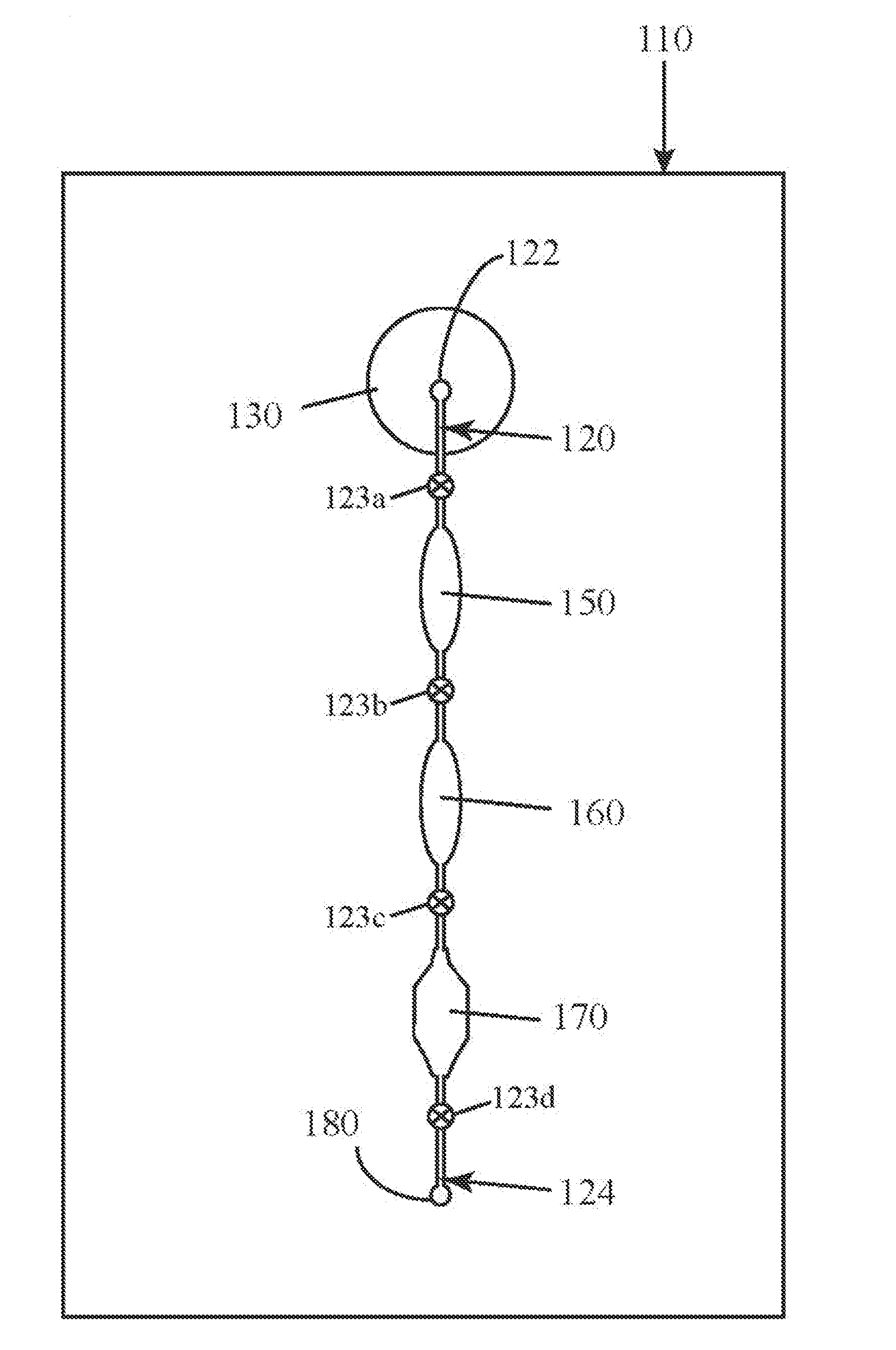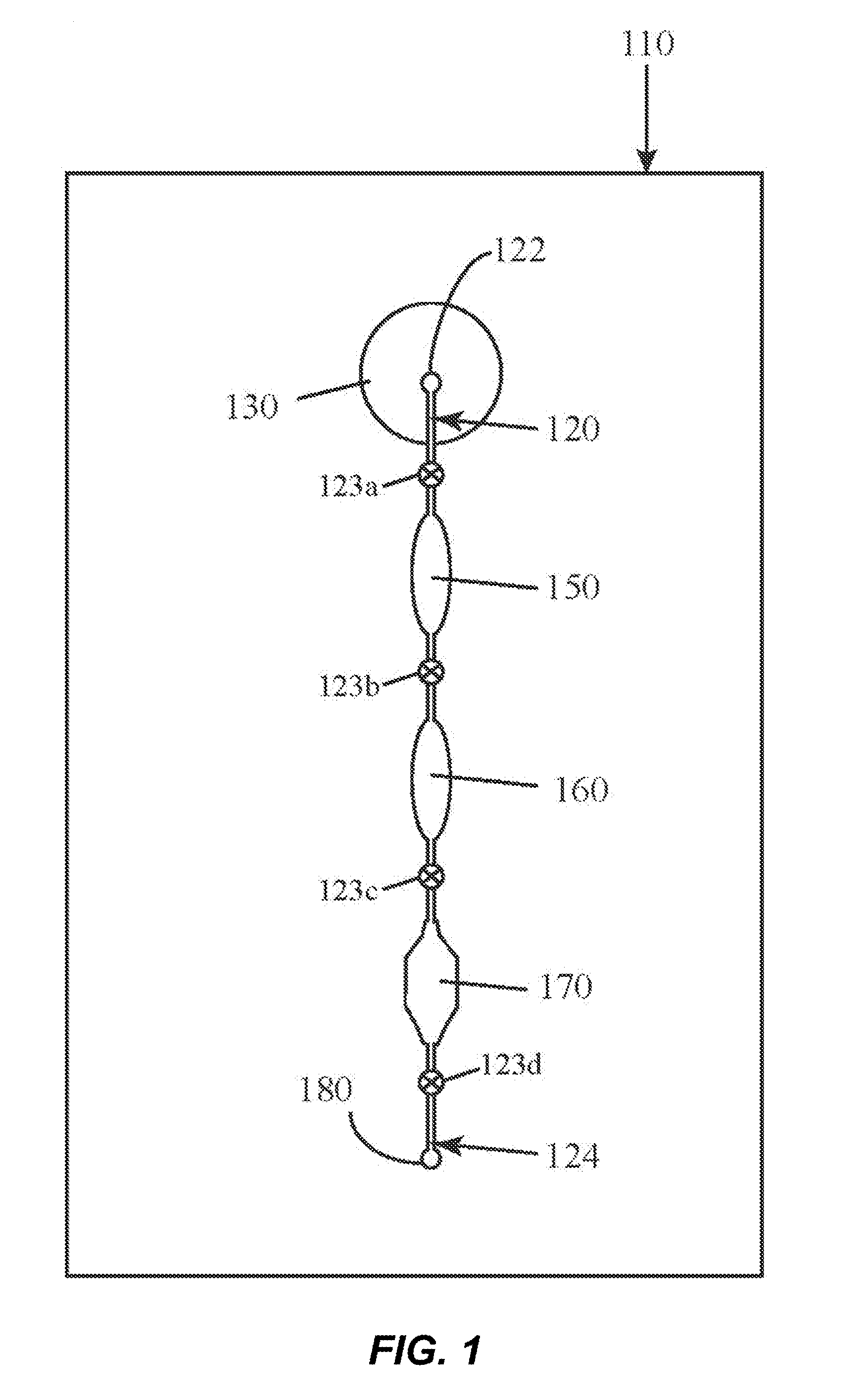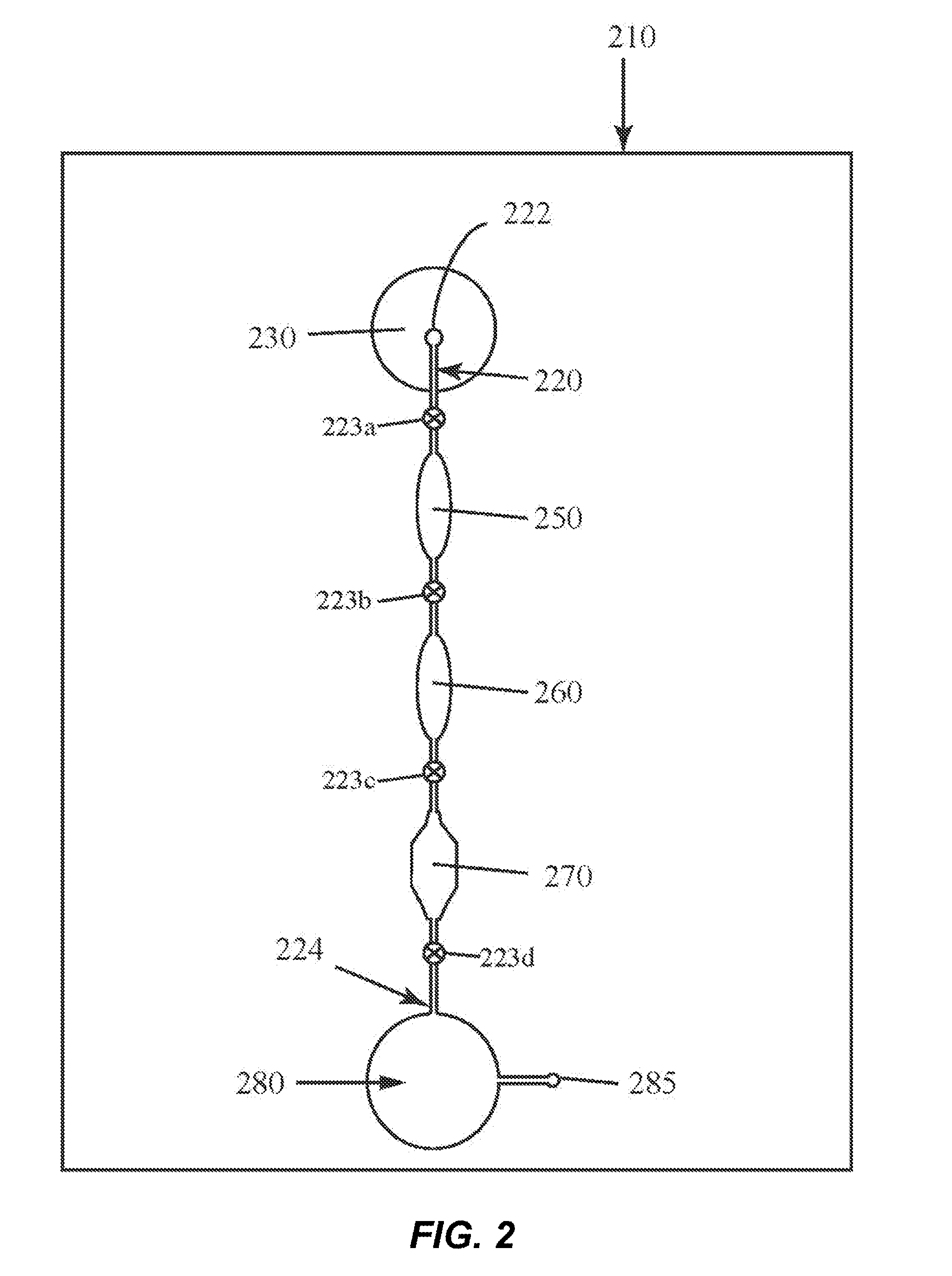Device for preparation and analysis of nucleic acids
- Summary
- Abstract
- Description
- Claims
- Application Information
AI Technical Summary
Benefits of technology
Problems solved by technology
Method used
Image
Examples
Embodiment Construction
[0027]The present inventors have surprisingly found that the combination of a clay mineral and an alkaline buffer can be used to prepare nucleic acids from complex biological test samples for molecular analytic procedures, such as PCR. Advantageously, these reagents can be used to prepare a single test sample for the detection of both DNA and a RNA target molecules without the need for further purification or isolation of the nucleic acids, offering a vast improvement over the state-of-the-art. Without being bound by theory, it is believed that the clay mineral provides several beneficial effects, including, but not limited to: protection of nucleic acids from hydrolysis under alkaline conditions; protection of nucleic acids from nuclease-mediated degradation; protection of downstream assay reagents, such as DNA polymerases, from inhibitors and other contaminants present in the test sample; and general buffering properties.
[0028]The present invention relates to microfluidic devices ...
PUM
| Property | Measurement | Unit |
|---|---|---|
| Coagulation enthalpy | aaaaa | aaaaa |
Abstract
Description
Claims
Application Information
 Login to View More
Login to View More - R&D
- Intellectual Property
- Life Sciences
- Materials
- Tech Scout
- Unparalleled Data Quality
- Higher Quality Content
- 60% Fewer Hallucinations
Browse by: Latest US Patents, China's latest patents, Technical Efficacy Thesaurus, Application Domain, Technology Topic, Popular Technical Reports.
© 2025 PatSnap. All rights reserved.Legal|Privacy policy|Modern Slavery Act Transparency Statement|Sitemap|About US| Contact US: help@patsnap.com



